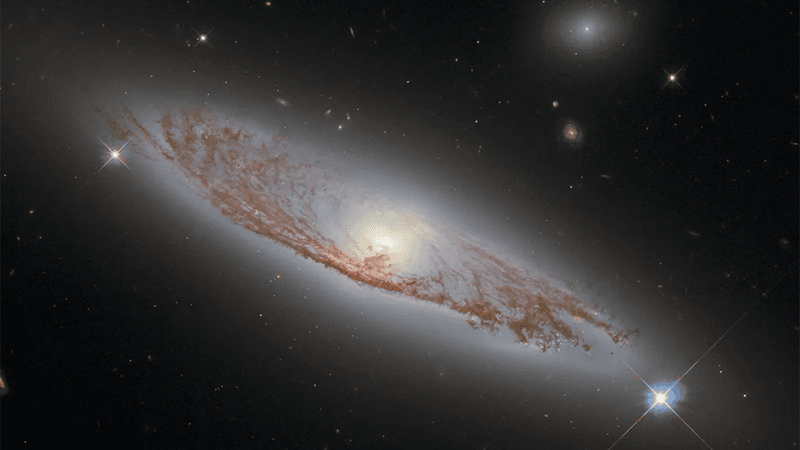On December 8, 1990, the NASA Galileo spacecraft experienced what has been dubbed a "flyby anomaly" as it flew past the Earth on its way to Jupiter and its moons. The anomaly, seen in several other spacecraft since then, remains an unexplained mystery to this day.
In missions to visit objects in the faraway Solar System, NASA has regularly employed "gravity assists". As spacecraft approach a large body (planets or a star), momentum is transferred from the planet to the craft, slowing the orbit of the object a tiny amount in exchange for a significant increase in velocity. In essence, you steal a bit of kinetic energy from the planet or star.
"Several robotic spacecraft have used the 'gravity assist' technique to achieve their targets 'high up' in the Sun's gravity well. Voyager 2 launched in August 1977 and flew by Jupiter for reconnaissance, and for a trajectory boost to Saturn," NASA explains.
"Voyager 1 launched the following month and did the same (reaching Jupiter before Voyager 2 did). Voyager 2 then obtained an assist from Saturn and another one later from Uranus, climbing all the way to Neptune and beyond. Galileo took one kick from Venus and two from Earth, while orbiting the Sun en route to its destination, Jupiter. Cassini took two boosts from Venus, one from Earth, and another from Jupiter to gain enough momentum to reach Saturn."
NASA has used gravity assists around Earth a fair number of times now. Analyzing six of these flybys by the Galileo, NEAR, Cassini, Rosetta, and MESSENGER spacecraft, teams have found small amounts of acceleration by the spacecraft beyond what was expected from the flyby.
"We report here on results from a recent study involving the data analysis and interpretation of radio Doppler data from all six flybys. We find that there is indeed an anomalous energy change during Earth flybys on the order of 10-6 , although we have been unable to find a physical cause or systematic error source for the anomaly," the team who spotted the anomaly wrote in a paper published in 2008.
"Like the Pioneer anomaly, and perhaps even more surprising, the Earth flyby anomaly is a real effect inherent to the tracking of spacecraft. Its source is unknown."
That team believed the effect was related to the Earth's rotation. But all sorts of explanations for the anomalies have been proposed, from relativistic effects to a dark matter halo around Earth.
"To explain the cases of negative drag flybys, exothermic inelastic scattering of dark matter on ordinary matter is required," one team suggested. "The cases of positive drag require either elastic dark matter scattering, or an asymmetric dark matter velocity distribution in the inelastic case. In addition, the dark matter must be confined well within the moon’s orbit and depleted near the earth’s surface."
Complicating the picture, some spacecraft, including Juno, experienced no anomaly during gravitational assists, suggesting new physics might be a bit of a stretch, at least until more data comes in from future flybys.
Several teams believed at the time that the Pioneer anomaly – anomalous acceleration in the Pioneer missions at around 20 astronomical units (AU), with one AU being the distance between the Earth and the Sun – could also be due to new physics. However, later probes did not undergo the same anomalous acceleration, and the anomaly was found to likely be a thermal effect causing recoil.
It is likely that there is a simple as-yet-unidentified cause for the flyby anomalies, too, or that there was some sort of data error. With all the spacecraft whizzing around us over the next few decades, maybe we won't have too much longer to wait for an answer to the puzzle.




![An artist’s concept looks down into the core of the galaxy M87, which is just left of centre and appears as a large blue dot. A bright blue-white, narrow and linear jet of plasma transects the illustration from centre left to upper right. It begins at the source of the jet, the galaxy’s black hole, which is surrounded by a blue spiral of material. At lower right is a red giant star that is far from the black hole and close to the viewer. A bridge of glowing gas links the star to a smaller white dwarf star companion immediately to its left. Engorged with infalling hydrogen from the red giant star, the smaller star exploded in a blue-white flash, which looks like numerous diffraction spikes emitted in all directions. Thousands of stars are in the background.]](jpg/jet-m.jpg)
